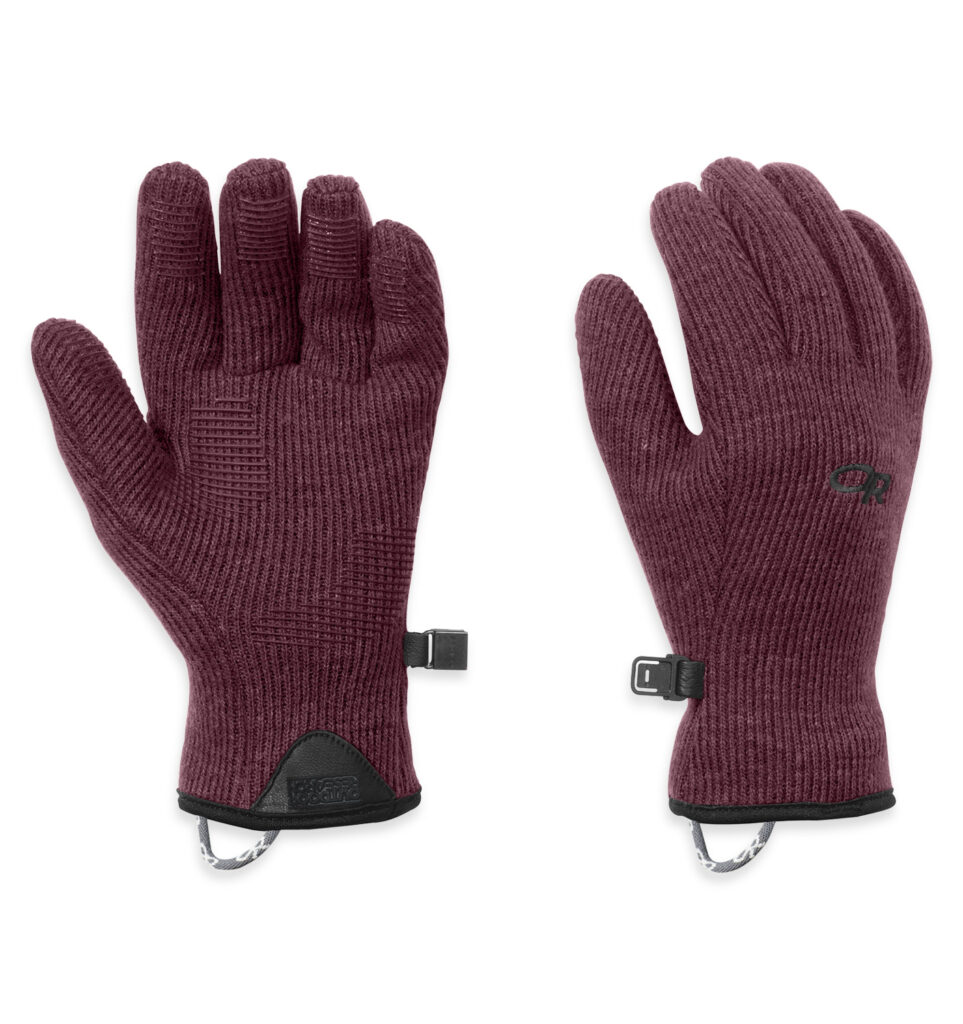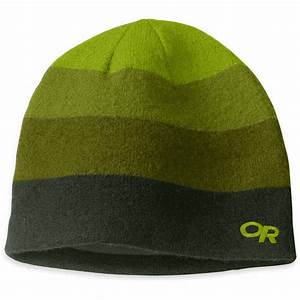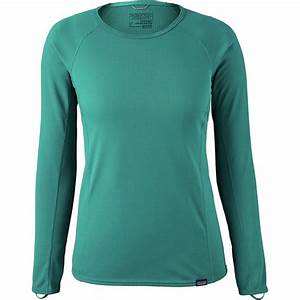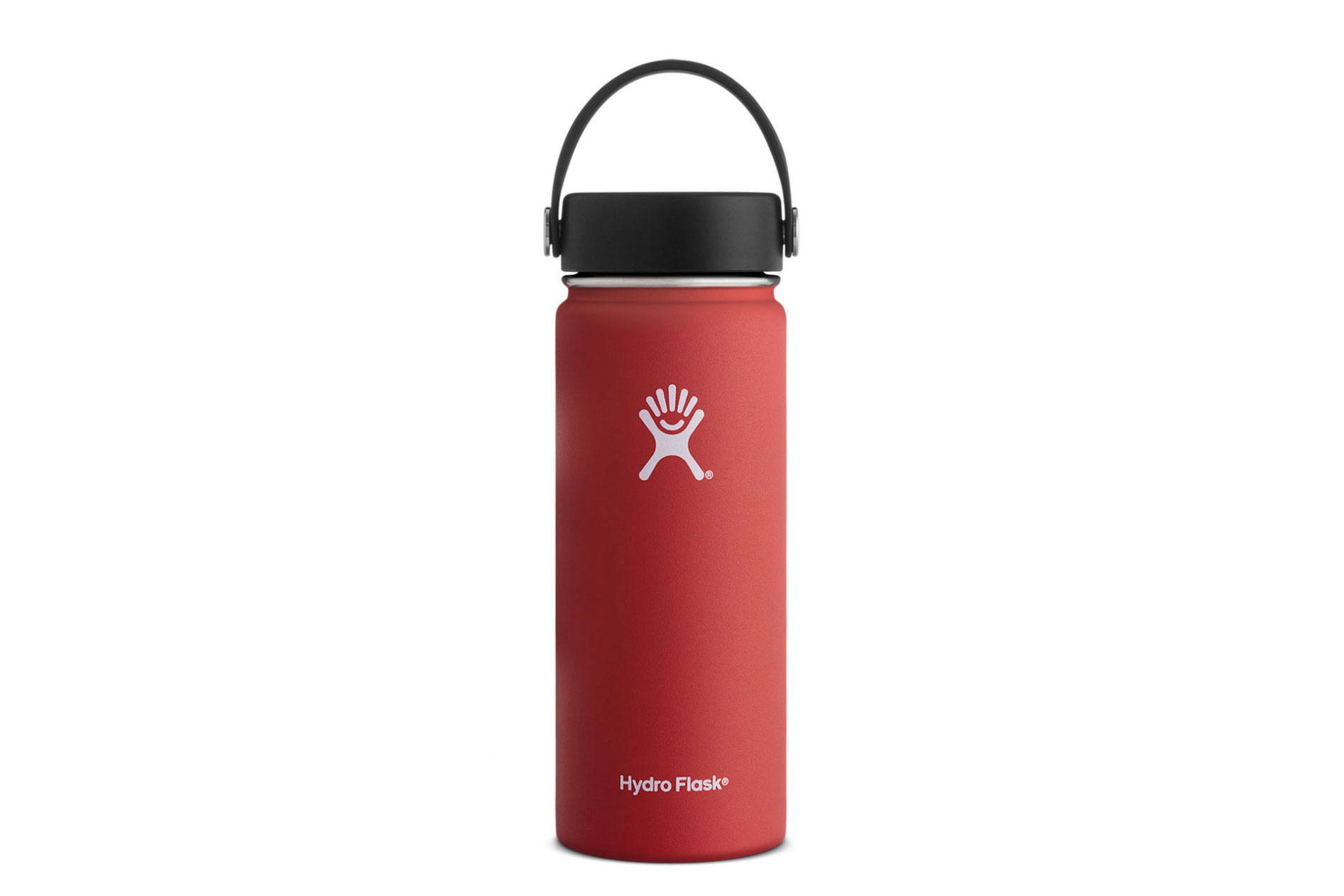Outdoor Research gloves and hats: your personal thermostat

They are, perhaps, the most ingenious HVAC systems ever devised, and you don’t need to set up a payment plan to buy them.
Come winter, a good set-up for covering your two main exposed heat vents — your head and hands — can make all the difference between being comfortable on the trail or vacillating between shivering cold and sweating hot. Let’s start with those hands.
Gloves. We’ve not conducted a formal adventure misery poll, but based on anecdotal evidence the most common whine on a winter hike involves cold hands. As those digits being to go cold, so does your attitude. A great option for warding off the winter woe-is-me’s are the Outdoor Research Flurry Sensor Gloves (men’s and women’s, $40). The Alpin-Wool Plus fabric (a wool nylon mix) protects your hands from the elements, while the soft fleece insides is like putting your hands in front of a warm fire. Flexy construction means you can grab stuff (water bottle, snacks) without removing your gloves. Also lets you navigate your touchscreen.
Going on a more winter-like adventure? OR’s Meteor Mitts ($70) offer the protection and warmth of mittens (and they’re waterproof), and when it comes time to rip into those Patagonia Organic Savory Seeds, the mitten flips back to let your fingers go to work.

Hats. Most hats do a decent job of keep your head warm. So what sets them apart? Style, or as Outdoor Research likes to call it “Beauty in Function.” That’s just what you get with the Melody Beanie ($28). It’s plush marriage of polyester and spandex means it’s snug to keep in the warmth, but not so snug it creates a permanent case of hat hair. Nor will it lead to excessive itching a mile into your hike. Its lightweight construction means that when it’s time to vent heat, you can slip it off your head and into your coat pocket with minimal bulging. For guys, the focus in winter headgear is performance. Hat hair? Hey, what guy doesn’t like to make people laugh — not that you’ll necessarily warrant one with your on-off heat regulation with the Outdoor Research Gradient Hat ($30). It’s boiled wool upper keeps the top of your noggin’ toasty, while the micro fleece earband provides macro warmth to your cold-sensitive ears. That’s just part of the “Gradient” aspect; the other — the fade-to-dark coloring, which makes us think of Appalachian ridges fading into the distance: Beauty in Function for guys as well.
These combos do a great job of heat management.
Layer up: Patagonia Capilene and Micro Puff
While hats and gloves are key to heat management on a winter adventure, they can’t do the job on their own. Imagine heading out for a hike in just a hat and gloves! (On second thought, don’t.) For adventure in 30-degree weather you need a strong one-two layering punch. A punch that Patagonia provides quite effectively with this base layer/outer shell combo:
 Base layer. It all starts next to your skin. You want something that’s snug but not tight, soft yet tough, something that wicks the sweat on a long uphill, then quickly evaporates it into thin air. It needs to move with you and not bind, and, especially important, it must be able to quell the — how to put this delicately — potentially malodorous effects of your long day on the trail. Meet the line of Capilene layers from Patagonia. Imbued with all sorts of fabric innovation (Polartec Power Gridfabric and Polygiene permanent odor control, for starters), this is a can’t-miss first step in your battle against the winter cold. Comes in a variety of styles (crew, zip neck) for both men and women. Starting at $89.
Base layer. It all starts next to your skin. You want something that’s snug but not tight, soft yet tough, something that wicks the sweat on a long uphill, then quickly evaporates it into thin air. It needs to move with you and not bind, and, especially important, it must be able to quell the — how to put this delicately — potentially malodorous effects of your long day on the trail. Meet the line of Capilene layers from Patagonia. Imbued with all sorts of fabric innovation (Polartec Power Gridfabric and Polygiene permanent odor control, for starters), this is a can’t-miss first step in your battle against the winter cold. Comes in a variety of styles (crew, zip neck) for both men and women. Starting at $89.
Outer layer. Wasn’t long ago that we wouldn’t have considered taking a down jacket on a hike. What happens when you warm up and need to shed said puffy: How on Earth will cram that ponderous parka into your pack? Times have changed, thanks to technology: Patagonia gives us the Micro Puff (men’s and women’s, $249) an uber ultralight jacket of PlumaFill synthetic insulation enrobed in water-resistant ripstop nylon shell. Warm? You bet. And if it gets too warm, it keeps squishing down until it takes up a nominal amount of room in your pack (and it weighs just 8.3 ounces). Especially handy when you stop to take a lunch break on the trail.
The Hydro Flask: Warmth from within

Is there a more welcome treat than a steamy hot chocolate or tea when you return to camp after a winter adventure? And is there anything more disappointing than when that treat goes from toasty to tepid in a frigid flash because you’re sipping it out of a plastic cup?
We think not.
What we do think is that you can readily remedy that situation with the 21-ounce Standard Mouth Hydro Flask bottle. Imagine being able to sit back in your camp chair and savor rather than slug down your favorite hot beverage, to sip your warm goodness over time rather than with a few scalding gulps. In fact, because the Hydro Flask’s TempShieldTM insulation vows to keep your beverage hot up to 12 hours, you could actually make your hot beverage before heading out — and it will still be hot when you get back. And this bottle is no one-trick pony: come summer, you can have a cold one waiting for you in your versatile Hydro Flask, a cold one that will stay as such for up to 24 hours.
While it’s a nice thought to have your Hydro Flask waiting for you in camp when you return, at just 11.3 ounces, you might as well tuck it into your pack and take it with you.
